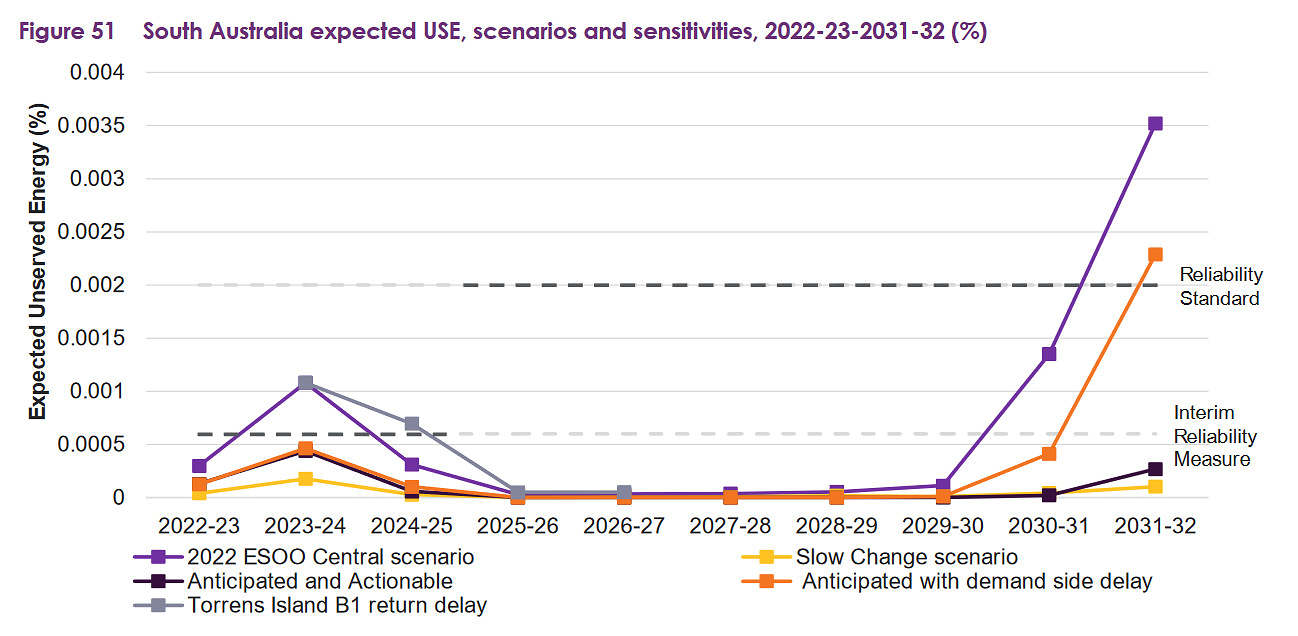A release from the AER shows that Tom Koutsantonis, South Australia’s Minister for Energy and Mining, last week triggered the Retailer Reliability Obligation in SA for the first quarter of 2026 (Jan 12 to March 13, 2026).
As part of the process, a Market Liquidity Obligation will be imposed on the region’s two MLO generators – AGL and Engie – and will begin on the 6th of February 2023.
The reasoning behind the minister’s move is still unclear at this stage – plant closure or changes to plant availability may be involved, but the AEMO’s public MTPASA data does not yet extend into the period that the RRO applies for.
Retailer Reliability Obligation (RRO) and the Market Liquidity Obligation (MLO)
The Retailer Reliability Obligation (RRO) was introduced in 2019 to provide additional incentives for investment in new generation to support system reliability.
The RRO can be triggered for a region by the AEMO if they identify a ‘material gap’ in reliability through the extensive modeling that they conduct as part of their annual Electricity Statement of Opportunities (ESOO). The AEMO can trigger the mechanism three years and three months ahead of the identified reliability gap. In South Australia only, the RRO can also be triggered by the state’s energy minister “if it appears to the Minister on reasonable grounds that there is real risk that the supply of electricity in all or part of South Australia may be disrupted to a significant degree on 1 or more occasions during a period in the instrument”.
After a similar event almost three years ago to the day, Allan O’Neil provided this detailed explainer about the RRO and why the SA energy minister might trigger it. And in a similar fashion to that occasion, the RRO has been triggered despite the fact that the AEMO did not identify a reliability gap for the given period (2025-26) in their latest ESOO.

AEMO’s outlook for South Australia’s expected unserved energy under several scenarios and sensitivities, as of August 2022.
Source: AEMO ESOO 2022
During the RRO process, a ‘liability instrument’ is made and liable entities (e.g. retailers and large energy users) are notified to procure enough contracts to cover their share of a one-in-two year peak demand.
The Market Liquidity Obligation (MLO) commences when the RRO is triggered and its objective is to provide liquidity and transparency for those entities to meet their RRO contracting requirements. The MLO operates between T-3 and T-1 when the RRO is triggered. Generators who are registered for the MLO are then required to post bids and offers, with a maximum spread, for standardised contracts that cover the related period.


Are there going to be unforeseen ramifications from the triggering of the RRO in South Australia from 12 January to 13 March 2026?? One South Australian MLO generator has about 900 MW of gas-fired generation of which about 40% are Open cycle gas turbines (more expensive electricity than combined cycle gas turbines) and on current advice to AEMO their OCGTs will close in 2030. Of the MLO’s OCGTs about half run on gas and the rest on diesel. How can a South Australian MLO with OCGTs due to close in 2030 offer contracts for March Quarter 2026 with uncertainty over gas supply and gas prices and Project Energy Connect due to be operational in July 2026? Will the $19.5 million deal between the South Australian Government and the other South Australian MLO be enough to keep the lights on in South Australia?